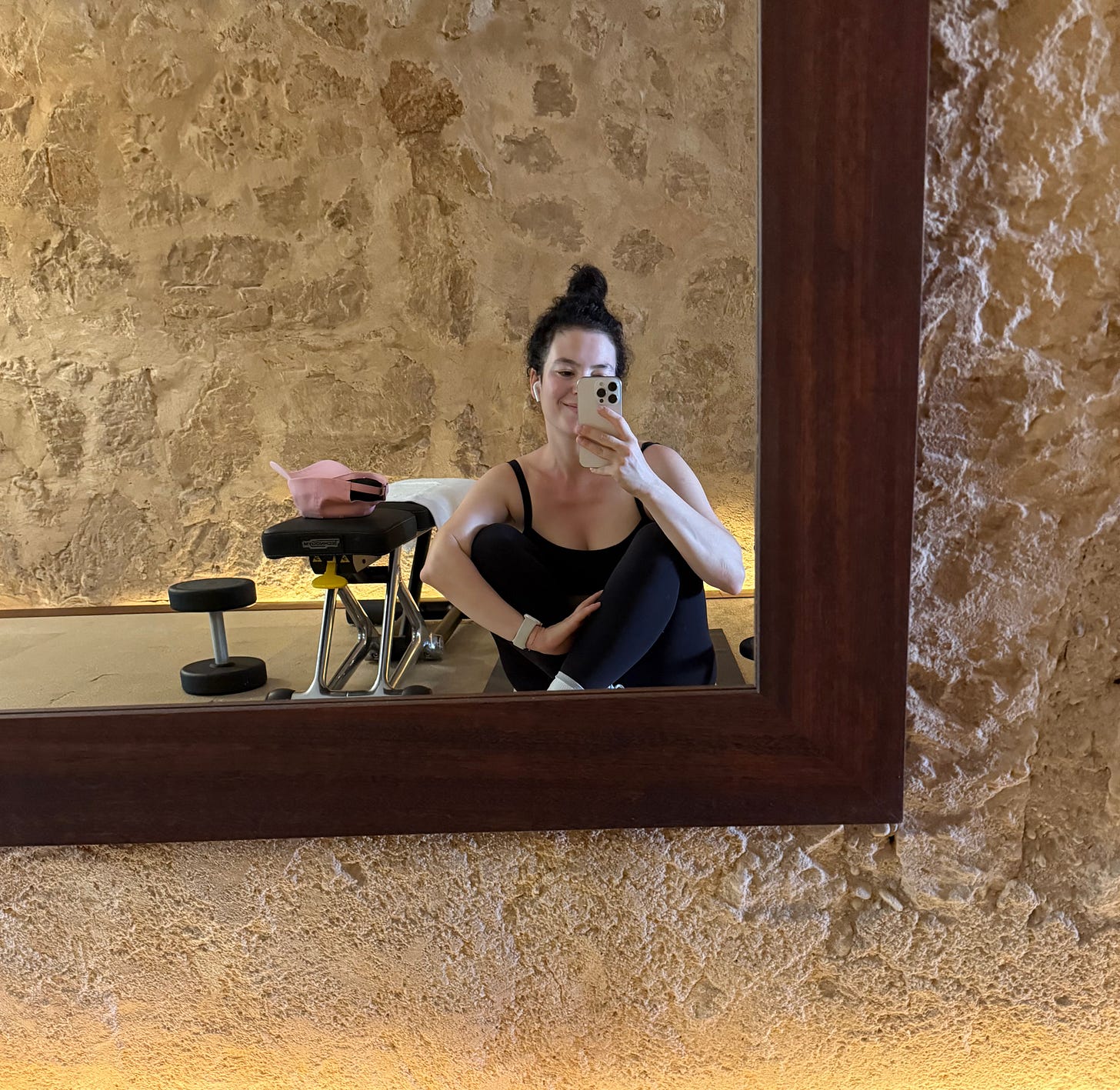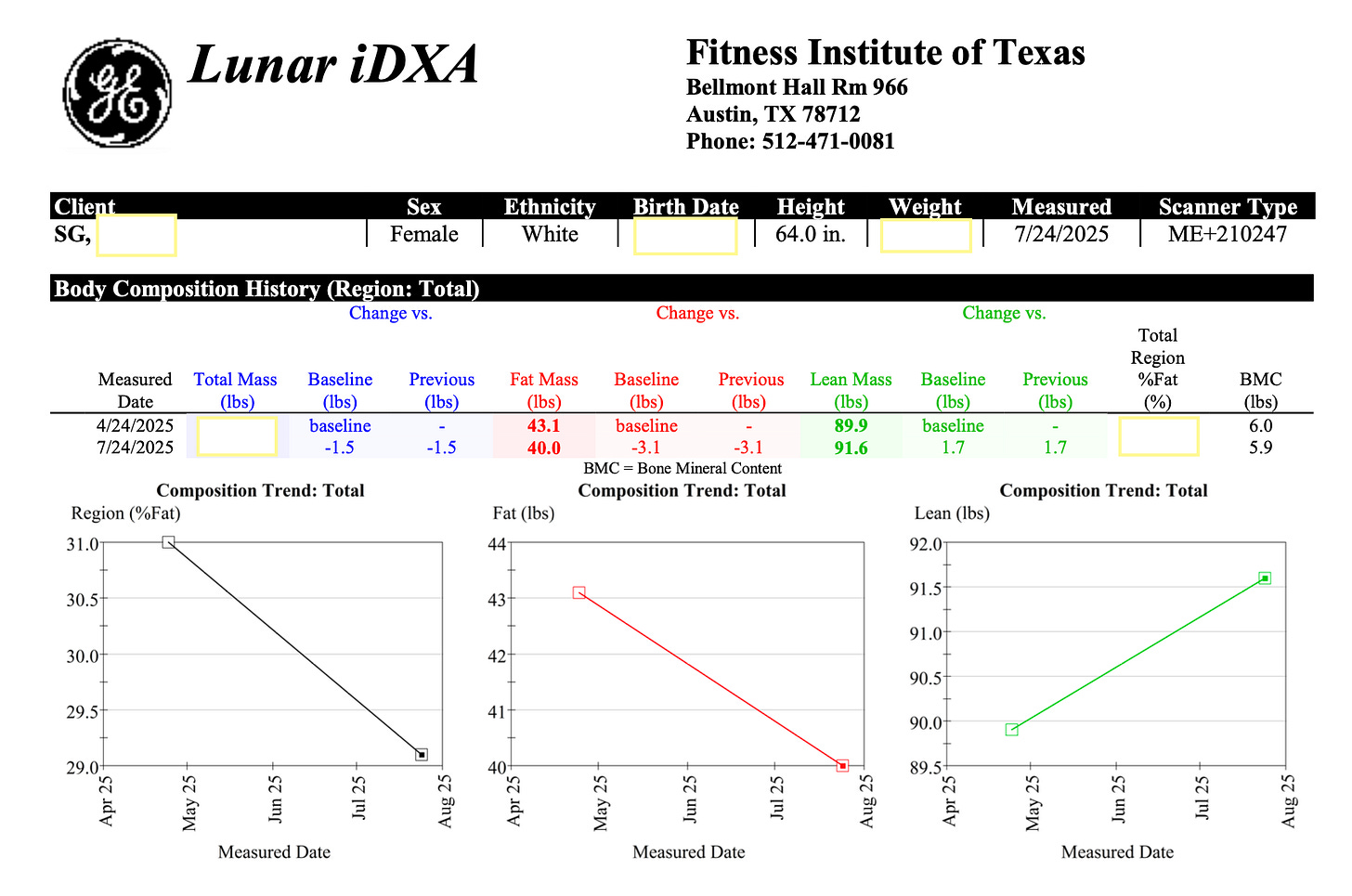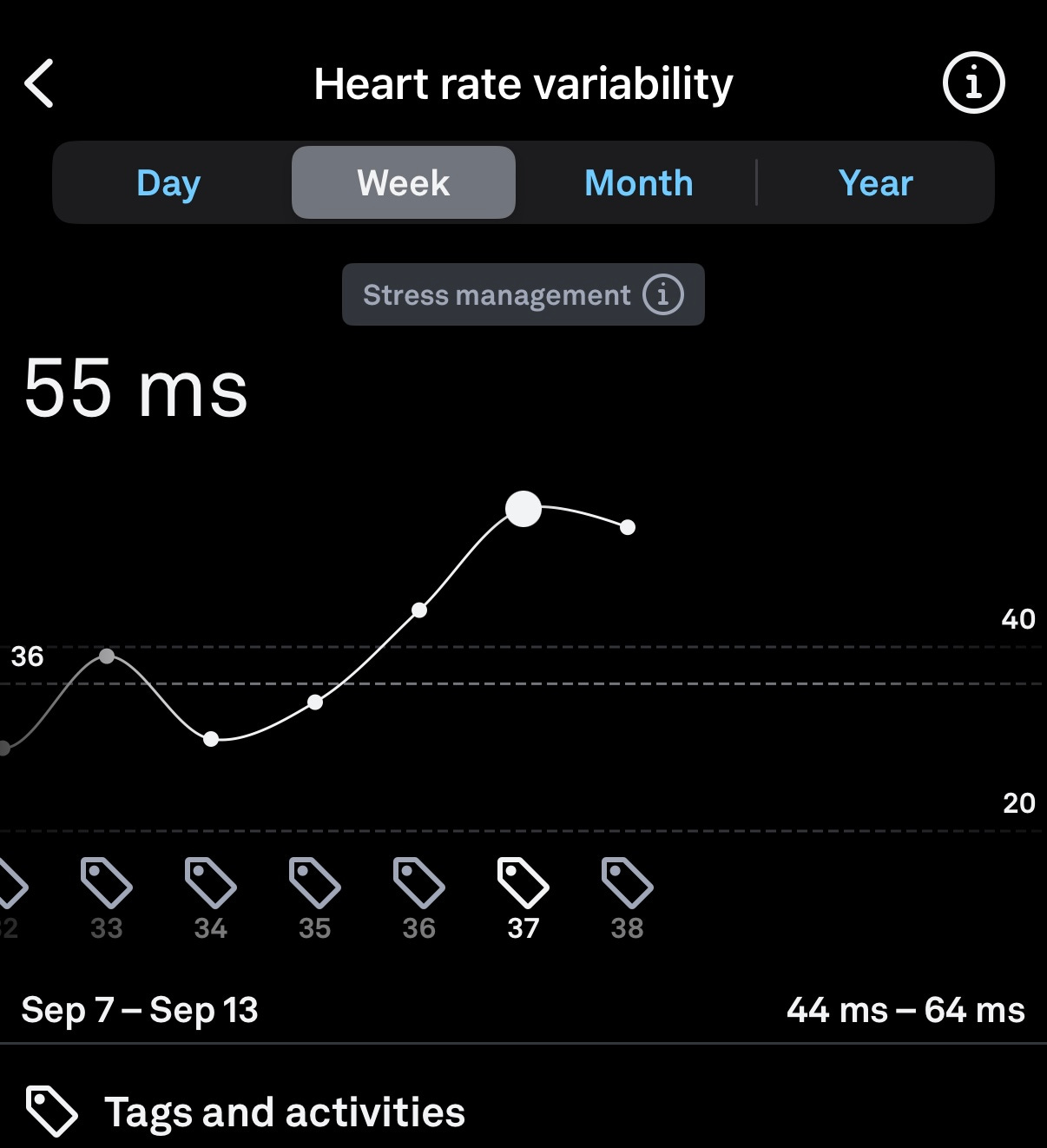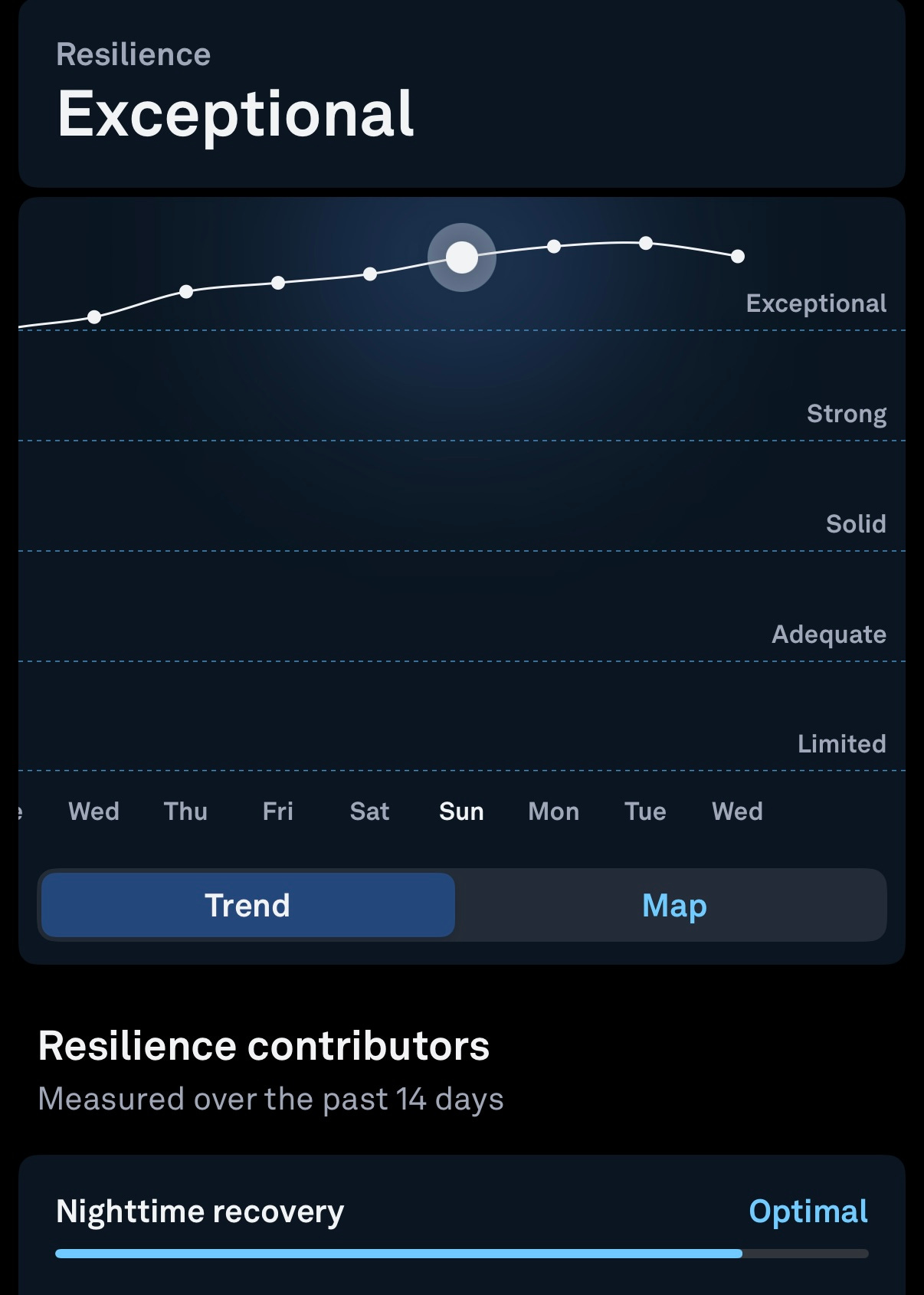Small changes to my wellness routine that made a big impact
On strength, food, rest, recovery, and mental health.
I’ve spent the past decade deeply immersed in health—researching, testing, and living through various protocols. Over that time, I’ve come to recognize which fundamentals really matter and which trends add little (if any) real value. But health isn’t static. Our bodies shift, our lives evolve, and the habits that served us once sometimes need recalibrating. Over the past few months, I’ve made a handful of small changes across training, nutrition, sleep, recovery, and mental health. None were radical, yet each had an outsized impact. Below, I’ll share what I adjusted, why it mattered, and how I measured the results in clear, quantifiable ways.
Training: I increased my weights and lost body fat
I started strength training about four years ago, and it has become one of the most transformative habits in my life. Yes, I’ve gained physical strength, but the deeper shift has been psychological. The gym is a place I genuinely love—a space where even on my hardest days, when I feel anxious or depressed, the simple act of moving weight grounds me. Heavy lifting demands full focus, and that blend of presence and exertion creates a powerful kind of release I haven’t found anywhere else.
When I moved to Austin this spring, I began training with someone new. I was also coming off a stretch of very intense work, which meant I had more energy to invest in my health. I’ve never been afraid of lifting heavy because I understand the science: women won’t “bulk up” unintentionally since testosterone levels are too low, and meaningful muscle gain requires a sustained calorie surplus. Still, I wasn’t sure I was physically capable of pushing my weights much higher. My trainer encouraged me to test that assumption—and she was right.
To track progress, I did a DEXA scan at the start and again three months later. The results surprised me: I gained nearly two pounds of lean muscle, lost three percent body fat and 1.5 pounds of total body weight. For context, during that same period, my hip thrust went from 135 pounds to 225 pounds. If you’ve ever believed women should stick to five-pound dumbbells, let this be a data point: real strength training delivers measurable, meaningful change without making you look like a body-builder.
Note: If you’re starting strength training for the first time, you might feel temporarily puffier or inflamed as your muscles adapt to the (positive) stress of lifting. This is normal. With adequate recovery and without a caloric surplus, your body won’t become bigger or bulkier—only stronger.
Nutrition: I started eating more carbs and changed my breakfast and dinner
Building lean muscle requires more than just progressively lifting heavier weights—it also depends on fueling your body with enough protein and carbohydrates to support muscle repair and growth. For years, I felt best on a lower-carb diet and leaned heavily in that direction. But at my trainer’s encouragement—and with fertility in mind—I began experimenting with adding back more carbs. Carbohydrates play a huge role in hormone health, particularly in supporting progesterone, so it felt like the right time to make this shift.
I still avoid grains like rice and wheat, which leave me lethargic and bloated, but I’ve had great success with starchy vegetables (potatoes, sweet potatoes), fruit, legumes (chickpeas, lentils), and small amounts of oats. Once I started adding a little more of these to each meal, the difference was immediate: I had more energy in the gym and found heavy lifts noticeably easier.
The other major change I made was to breakfast. For years, my default was the good decisions protein smoothie—nutritious, reliable, and easy. But I wanted to see what would happen if I ate something more substantial in the morning, especially since I usually train after breakfast. Here’s what I’ve been eating for the past few months:
Breakfast one: ½ cup grass-fed Greek yogurt with berries and grain-free granola, plus a shake of 1 scoop whey protein, ½ scoop collagen, and 1 teaspoon psyllium husk.
Breakfast two: ½ cup grass-fed Greek yogurt with berries and grain-free granola, plus two eggs.
Breakfast three: ¼ cup overnight gluten-free oats mixed with 1 scoop whey protein, ½ scoop collagen, 1 teaspoon psyllium husk, cinnamon, raw almond milk, topped with Greek yogurt and berries.
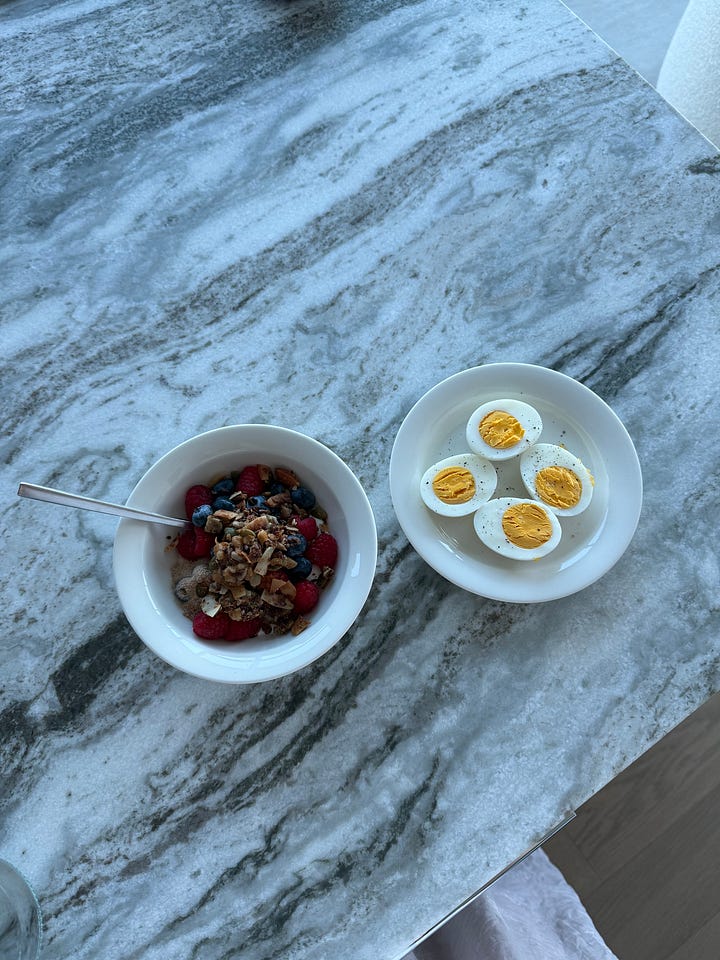
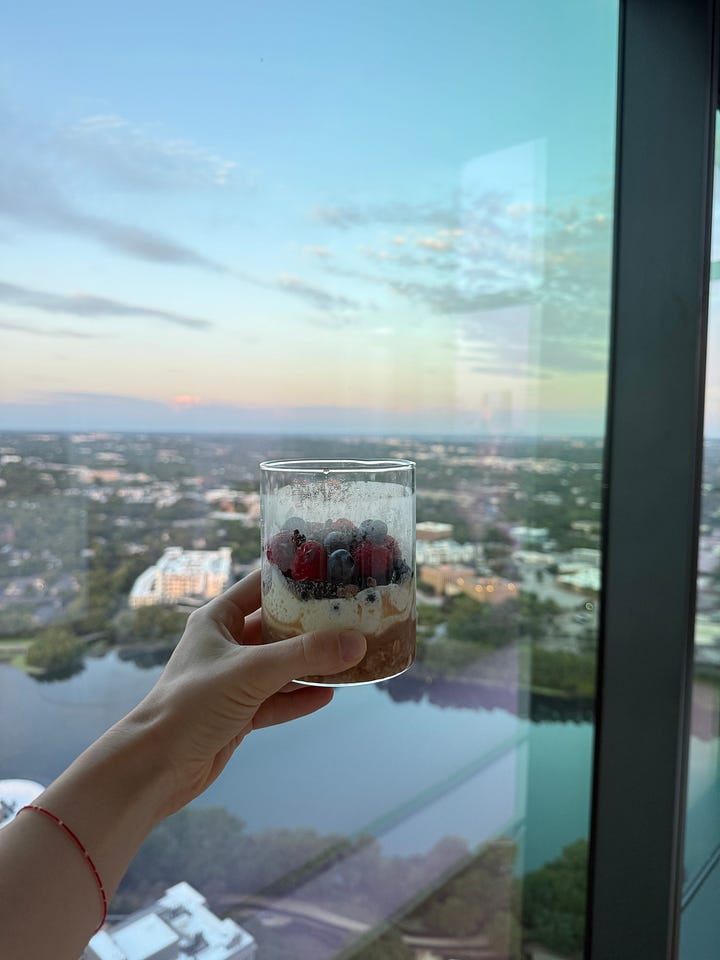
Each of these breakfasts delivers ~50 grams of protein, 30–50 grams of carbohydrates, and lots of fiber. They’re also blood-sugar friendly, satiating, and delicious. Breakfast has always been my favorite meal of the day, and leaning into a heartier version has only deepened that joy.
Evenings, on the other hand, are when I’m least hungry. Over the past few months, I’ve naturally gravitated toward smaller, earlier dinners—and the results have been surprising. My HRV (heart rate variability) has increased substantially with this change. HRV is one of the most reliable markers of recovery, resilience, and overall cardiovascular health. No amount of conditioning or cardio has moved my HRV the way this simple dinner shift has. Below is a snapshot of what my weekly HRV trends look like when I keep dinner light and early.
Sleep: I started sleeping more
There’s a certain genre of social media flex built on “thriving” with only five hours of sleep—juggling a full-time job, a Substack, a side hustle, and a packed social calendar. Good for them. But I’d be curious to check back in a decade. If they’re women, what do their hormones and fertility look like? Are they quietly burned out behind the façade? Because while cutting sleep might look like a productivity hack, the truth is it’s a direct path to physical decline and mental erosion over time.
For me, this became impossible to ignore once I started training heavier and became more serious about supporting my long-term health. I used to average around seven hours of sleep, but I’ve shifted closer to eight—sometimes even eight and a half. And no, I don’t feel like I’m missing out. In fact, the opposite: the hours I am awake feel sharper, more productive, and more intentional because I’m well rested. I’m less irritable, less likely to reach for sugar, and more resilient overall.
Yes, I’ve had to cut things out to make this possible. But they were things I won’t miss: late-night scrolling, one more episode of a TV series, or socializing with people I don’t deeply value. The trade-off is obvious—better mood, better focus, and a stronger foundation for both training and fertility. And of course, the data backs it up. My recovery metrics have all improved with this one simple adjustment: sleeping more.
Recovery: I fixed my back pain with a simple habit
I’ve struggled with back pain since my years in ballet school. Because of my natural hyperextension in the lower back, the discomfort never fully went away—and as I got older, it actually became more persistent. Any time I had inflammation in my body, the pain would flare.
For the past six months, I’ve committed to a simple but consistent routine: ten minutes every evening of foam rolling my back and legs, followed by a few mobility exercises with an emphasis on opening up the hip flexors. Paired with a stronger core from my training, this small daily practice has made a huge difference. My back pain has gone from a near-constant presence to something I rarely notice at all—now it only shows up if I’ve been sitting for hours on a long flight or if I’m under the weather.
Mental wellbeing: I unfollowed everyone in the health space
This one might sound extreme, but I’ve stopped following health and wellness creators—and even stopped listening to most of their podcasts—with one exception: Peter Attia. There are two reasons. First, after a certain point the information just becomes repetitive. Once you understand the fundamentals, hearing the same advice in slightly different packaging doesn’t add value.
Second, and more importantly, I’ve noticed a shift in tone. What may have started as a genuine desire to educate often feels like it’s devolved into a game of chasing engagement through fear. You only need to glance at YouTube titles or podcast feeds to see it: ominous headlines designed to trigger anxiety, as if we’re all doomed unless we follow some convoluted 20-step protocol.
This tendency is especially pronounced in the women’s health space—fertility, pregnancy, reproductive health. While it’s valuable that people now share their struggles openly, the balance feels off. The conversation has tilted so heavily toward loss and trauma that it can feel like nobody has positive experiences anymore. Of course those experiences exist, but they’re rarely highlighted.
For me, stepping back from this cycle has been profoundly helpful. Every time I take a break—or better yet, unfollow altogether—I feel calmer, less anxious, and more creative. My thoughts are clearer, my mood lighter. It’s a reminder that we don’t have to invite content into our lives that makes us fearful, especially when those fears aren’t rooted in our own lived reality.
In the end, it’s rarely the dramatic overhauls that endure. It’s the edits made at the margins—the way we eat, train, sleep, recover, and think—that alter the shape of a day and, eventually, a life. These are mine. I’ve recently opened a subscriber chat, and I’d love to read your thoughts, questions, and experiments there.


